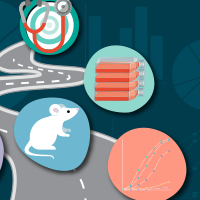Blood–brain barrier models in pre-clinical assessment of CNS-targeting cell and gene therapies
Cell & Gene Therapy Insights 2019; 5(7), 937-947.
10.18609/cgti.2019.085
The central nervous system (CNS) diseases are among the most difficult to treat; the brain is thoroughly shielded by the blood–brain barrier (BBB), making many systemically administered therapies ineffective. Many rare, progressive and debilitating CNS diseases are caused by specific and variously inherited mutations in the DNA sequence of a single gene which can be modified or cured by correcting the faulty gene. Recent rapid advances in gene therapy and genome editing technologies are making this lofty goal much closer to reality. CNS is a major disease focus of key industry players in gene and cell-gene therapy. In this article, we will discuss how the emerging human BBB models derived from induced pluripotent stem cell (iPSC) have emerged as an important tool for discovery and preclinical evaluation, including CNS toxicity, of brain-targeting viral and non-viral gene and cell-gene therapies.
